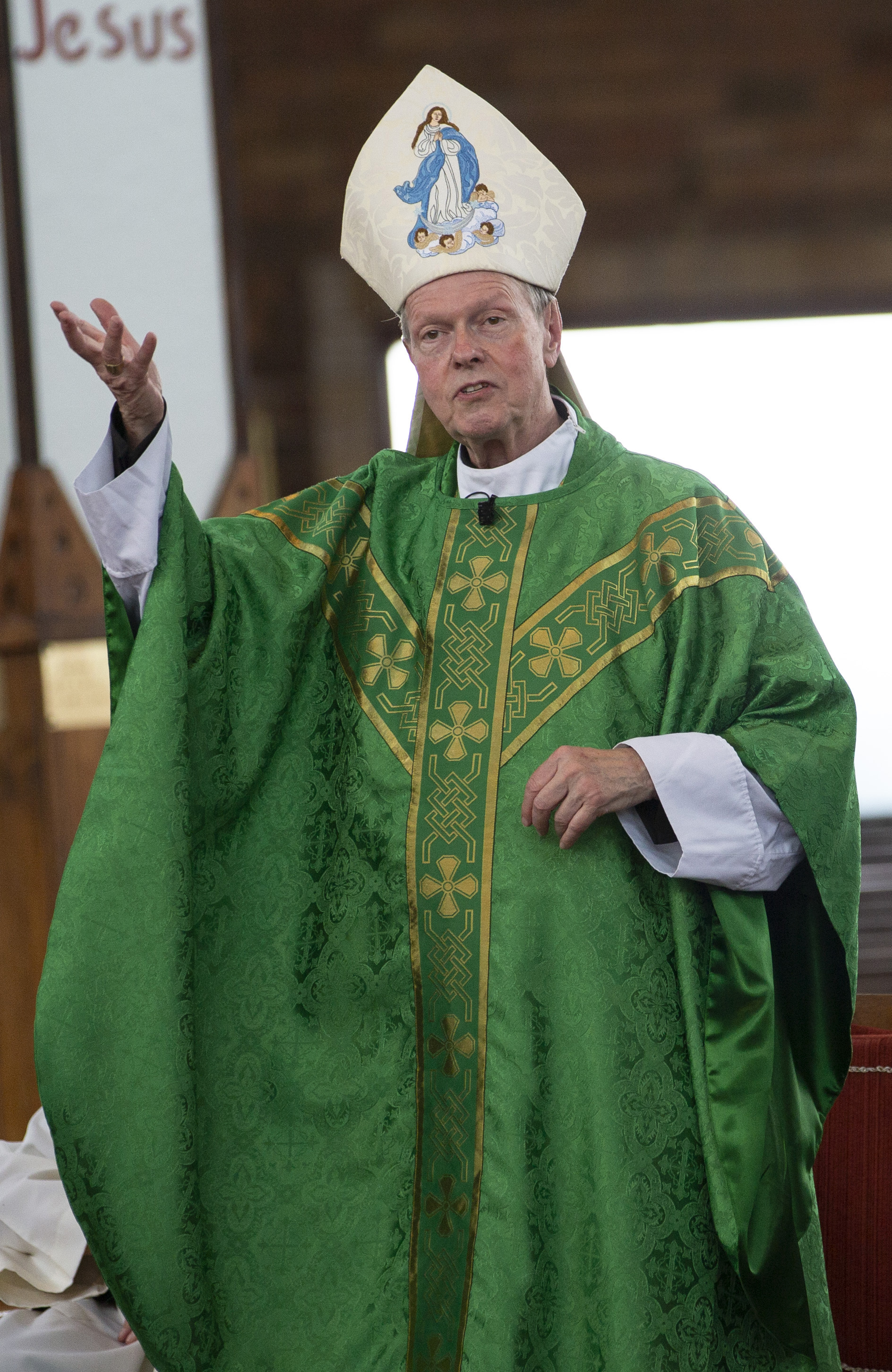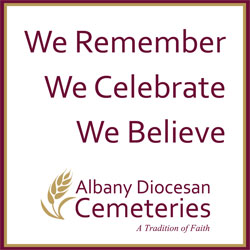December 16, 2020 at 5:58 p.m.
The Christmas season typically brings with it no small amount of nostalgia as we recall memories of celebrations and traditions that brought us happiness and defined what this time of giving means to us. With what’s happening in our world now, this Christmas season might have people thinking of past celebrations with feelings of longing, if not loss, for not being able to enjoy the company of friends and loved ones.
Some people — remembering days past when the church would be decorated at Christmas and filled with voices raised from every row and aisle, and how the altar would be lined with altar boys in red and white — sadly might miss attending services this year. They might miss the simple joy of seeing the church adorned with those special reminders of the season. Advent would bring with it the appearance of the church’s Nativity scene. These figures (shown in the photos) from St. Francis of Assisi Church (formerly St. James Church) in Albany will be remembered by many parishioners. In this time of necessary health-related restrictions, these photos are presented — along with the following essay — and shared with those who might enjoy seeing their return.
The church’s basement is the room where years ago we would have gathered to change into the red cassocks and white surplices we’d wear for Christmas. Now it’s used for storage. In this room that brings me back in time so many years, we find them: a treasure in plain sight.
In years past, with the start of Advent, the figures would have been carried for display in the church. Islands of poinsettia arrangements would have floated around them. Candlelight would have flickered in cascading rows before them. Whispers of their appearance would have floated in the air. Seeing them now, even for just these few moments, holds a feeling of discovery and a sense of wonder.
I remember these Nativity figures from my days as an altar boy. That’s over 50 years ago. Seeing them once again, just thinking about all those years, and the passing of time, leads me to wonder just how many children and their parents would have gazed upon these figures. No one can say. Likewise, we are left to suppose how much these figures, as a compelling representation of the infancy narrative, might have illumined and inspired the prayer, contemplation and adoration of a community.
I think of all who might have taken time to view the shepherds, kings, the angel, the carpenter father and the Mother and Child. Children and their families. Year after year. It’s not difficult to believe that children especially might have experienced a moment of personal connection. Not diversion. Not distraction. Not something virtual or artificial. This was an understanding, however new and incomplete, of the profound and the sacred. Kneeling at the altar railing that at one time was set before them or sitting in the pews, children would have looked upon these idealized figures, brought together again at Christmas, and known them for celebrating all the hopes, wishes and blessings of this special time. Such experience is no less than the quiet excitement of faith. Does such devotion resonate in these old figures? How much would a child’s prayer, a child’s devotion, resonate in simple statues over all the years?
These are the figures that remain. Two of the kings are missing; also, I think there were more shepherds and animals. Of those that are here, decay speckles, stains and gouges. Surfaces crackle with chips, scratches and fractures. And yet, their expressions of reverence survive. Their gestures of piety and veneration still evoke such feelings. Whether looked upon for the first time or remembered from a Christmas of long ago, in a glance can be seen what stirred the thoughts of all who, as rows of candles flickered through every passing year, came to the manger at Christmas. No prayer or devotion from those days of long ago right up to today could fail to resonate. You can see time, the celebration of Christmas after Christmas, in these old, crumbling figures. That is treasure.
John Norton is an award-winning photographer, who was brought up in St. James parish, where he was an altar boy. He credits Vince C. Forte for making this photoshoot possible. Forte is a life-long member of St. Francis of Assisi parish (formerly of St. James parish), a former Pastoral Council member and a current member of the Prayer and Worship Committee. They became friends as altar boys and the project came together because such a friendship endures.
MORE NEWS STORIES
- Texas judge sets new execution date for Robert Roberson, despite bipartisan intervention
- West Virginia ban on mifepristone’s use in abortion upheld by federal court
- School club gives students chance to benefit veterans, fosters Gospel value of serving others
- Proof of life for kidnapped Nigerian priest received by Alaska diocese where he served
- Filled with hope, Christians know cries of the innocent will be heard, pope says
- Priest convicted of distributing, possessing child pornography said to still work at Vatican
- Pope calls for ceasefire, dialogue, peace after Catholic church hit in Gaza
- UPDATE: 3 dead, Holy Family Gaza pastor injured after mid-morning Israeli attack
- Top Republican appears to walk back probe of Catholic entities amid charged committee hearing
- Mahmoud v. Taylor: A Supreme Court victory for parents and for freedom










Comments:
You must login to comment.